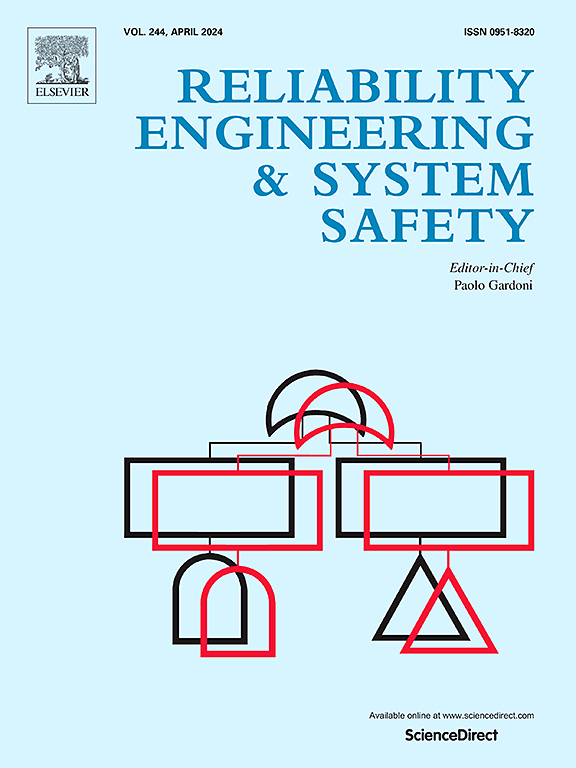Relaxed subset simulation for reliability estimation
IF 11
1区 工程技术
Q1 ENGINEERING, INDUSTRIAL
引用次数: 0
Abstract
The practical implementation of subset simulation (SuS) may be biased in estimating the small failure probability, when the limit state function (LSF) exhibits pathological geometries that hinder the ergodicity of Markov Chain Monte Carlo (MCMC) sampling. To address this, we propose a “relaxed” version of SuS (Re-SuS), which replaces the conventional indicator function with a hybrid indicator function to enhance the capability of MCMC in exploring the standard normal space. This modification stems from a sequential importance sampling (SIS) interpretation of SuS, offering flexibility in selecting intermediate sampling distributions (ISDs). The hybrid indicator function incorporates both the LSF and the probability density function (PDF) of standard normal variables, acknowledging that failure events typically correspond to small PDF values. By including portions of intermediate safe domains, the ISD in Re-SuS slows the transition to the failure domain, improving the likelihood of identifying true design points. Various benchmark examples are presented to validate the performance of Re-SuS, demonstrating its robustness against misleading LSF geometries. While the estimation uncertainty is marginally higher than in the original SuS, Re-SuS significantly reduces the potential bias in failure probability estimation. More broadly, the SIS interpretation of SuS provides opportunities for further performance enhancements through careful design of the ISD.
可靠性估计的松弛子集仿真
当极限状态函数(LSF)表现出阻碍马尔可夫链蒙特卡罗(MCMC)采样遍历性的病理几何时,子集模拟(su)的实际实现在估计小失效概率时可能存在偏差。为了解决这个问题,我们提出了一种“宽松”版本的指标函数(Re-SuS),用混合指标函数取代传统的指标函数,以增强MCMC探索标准法向空间的能力。这种修改源于对SuS的顺序重要性抽样(SIS)解释,为选择中间抽样分布(isd)提供了灵活性。混合指示函数结合了LSF和标准正态变量的概率密度函数(PDF),承认故障事件通常对应于较小的PDF值。通过包含部分中间安全域,re - su中的ISD减缓了向故障域的过渡,提高了识别真正设计点的可能性。给出了各种基准示例来验证re - su的性能,证明了其对误导LSF几何形状的鲁棒性。虽然估计不确定性略高于原始SuS,但Re-SuS显著降低了故障概率估计中的潜在偏差。更广泛地说,SIS对SuS的解释为通过仔细设计ISD进一步提高性能提供了机会。
本文章由计算机程序翻译,如有差异,请以英文原文为准。
求助全文
约1分钟内获得全文
求助全文
来源期刊

Reliability Engineering & System Safety
管理科学-工程:工业
CiteScore
15.20
自引率
39.50%
发文量
621
审稿时长
67 days
期刊介绍:
Elsevier publishes Reliability Engineering & System Safety in association with the European Safety and Reliability Association and the Safety Engineering and Risk Analysis Division. The international journal is devoted to developing and applying methods to enhance the safety and reliability of complex technological systems, like nuclear power plants, chemical plants, hazardous waste facilities, space systems, offshore and maritime systems, transportation systems, constructed infrastructure, and manufacturing plants. The journal normally publishes only articles that involve the analysis of substantive problems related to the reliability of complex systems or present techniques and/or theoretical results that have a discernable relationship to the solution of such problems. An important aim is to balance academic material and practical applications.
 求助内容:
求助内容: 应助结果提醒方式:
应助结果提醒方式:


